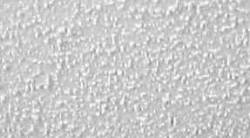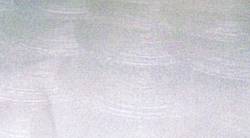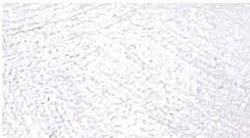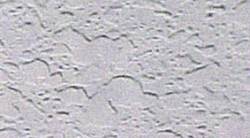Stucco and popcorn textures (Figure 1) were used on walls and ceilings for a number of reasons - appearance, sound attenuation and to hide imperfections in the original plaster or drywall workmanship.

Figure 1 - Typical Popcorn Ceiling
WARNING: Many stucco and popcorn ceiling products, used during the period up to the mid 60s used asbestos as one of the ingredients.
As well, if you are planning on removing your current ceiling, it is possible that the insulation above that ceiling has asbestos material in it.
The removal and disposal of any asbestos should be handled by professionals.
Although very popular on ceilings and in some cases on walls, in the 50s through to the late 70s, many homeowners are not pleased with the resulting aesthetics and wish to go to a flat wall or ceiling.
There are many types of patterns and designs, Figures 1a, 1b, 1c and 1d, are used on ceilings and walls - the traditional "Popcorn Ceiling" is shown in Figure 1 above.
Common Stucco Textures

Figure 1a - Mud Swirl Stucco Texture

Figure 1b - Orange Peel Stucco Texture

Figure 1c - Sand Swirl Stucco Texture

Figure 1d - Skip Trowel Stucco Texture
Dealing With A Popcorn Ceiling:
The removal or covering of a popcorn ceilings is somewhat different than dealing with a stucco ceiling. The popcorn effect was sprayed onto the finished layer of plaster or drywall. Hence, it is a separate layer and can be removed.
The easiest way (assuming there is no asbestos) is to moisten the ceiling with water using a spray bottle and then scrape the ceiling using a 4 to 8 inch scraper or drywall knife
- Remove all the furniture from the room or cover with tarps or plastic sheeting.
- Cover the floor with tarps or plastic sheeting.

Figure 2 - Pigtail Light Socket
Note: The particles that will be removed from the ceiling are highly abrasive. Wiping them from furniture and floors can leave scratch marks. Hence, the importance of removing or covering all furniture and covering all floors.
Note: Wear safety goggles.
- Remove any light fixtures from the room. The pieces of popcorn texture adhere to everything. If you need the lighting from a fixture, use temporary lights plugged into wall receptacles, or after removing a light fixture use a temporary pigtail lamp socket (Figure 2), as shown on the right.
